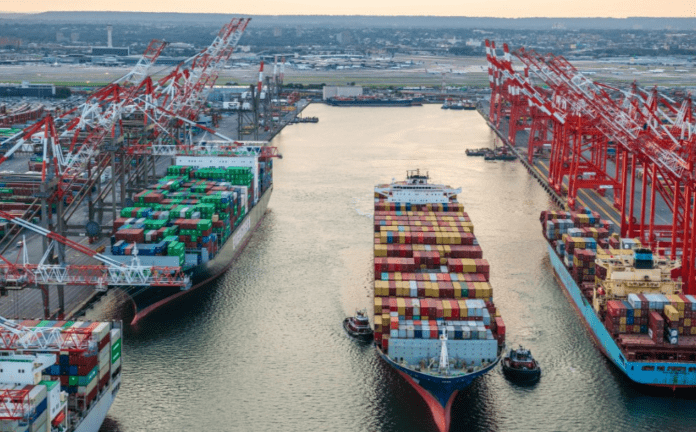US West Coast ports saw a relative increase in import volumes compared to their East and Gulf Coast counterparts with a 12.7% month-on-month increase compared to a 5.1% decrease for the Eastern ports.
West Coast imports saw a surge through Long Beach which saw a 23.6% increase while a decrease of 16.5% in Savannah imports were the major movers on each coast.
“We are now back into a period without this pandemic-related noise where the overall year-over-year change is a pulse related to the economy of tangible things,” wrote shipping expert John McCown in his October report, published this week.
According to McCown, the November figures will show a significant increase in volumes, based on data from Container Trades Statistics (CTS) which reveal that September data for Far East exports will translate into import volumes of around 14.2% in the US next month.
Overall inbound volumes in October showed an 8.8% increase compared to October 2019, before the pandemic affected statistics, which translates to a compound annual growth rate (CAGR) of 2.1%, well above the CAGR of 0.3% in August and the same as the September figure.
The shift back to the West Coast has slowed, but still showed a 17.8% gap in favour of West Coast ports which increased volumes by 12.7% compared to a 5.1% volume decrease on the East Coast. This is a far smaller gap than the 30.4% seen in September.
New York remains at the top of the top 10 US ports for imports with October volumes of 374,590 TEU compared to LA’s 372,455 and Long Beach’s 363,300 TEU. But the three-month aggregate of 1.062 million TEU compares with 1.198 million and 1.097 million TEU for Los Angeles and Long Beach respectively and reveals the underlying trajectory of 13.9% decline in New York compared to 10.5% and 7.5% increases on the West Coast over the last three months.
A continuation of this trend will see both the West Coast ports overtake New York during November.
Export volumes continue to be dominated by East and Gulf Coast ports with Houston topping the league with 126,011 TEU in October, with LA second with 121,276 TEU, but Savannah, New York and Norfolk complete the top five export facilities with Long Beach reduced to 90,073 TEU after a 24.8% decrease in October.
In total, the East and Gulf Coast ports exported 501,533 TEU, compared to 322,683 TEU from the West Coast. Exports over the three months to October increased 2.1% to 2.43 million TEU, but the CAGR was -3.7%.
“In October those ports [East and Gulf Coast facilities] represented 60.8% of exports but only 53.3% of imports,” said McCown.
The CTS global container rate measure offers an indication of where all rates, including global spot and contract rates, are compared to 2008, with the figure for 15 years ago set at 100. The latest CTS index, at 71, shows that global rates are 29% below 2008 rates. However, it is higher than the Q4 2019 index of 66.33.
Mary Ann Evans
Correspondent at Large







